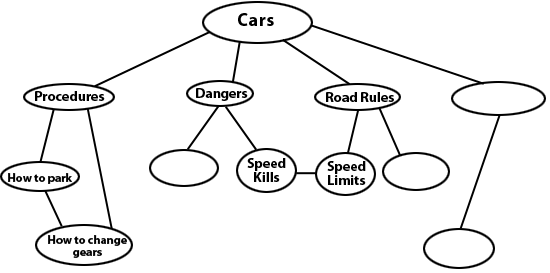The definition of learning
Learning may be defined as the encoding (storage) of knowledge and/or skills into long term memory in such a way that the knowledge and skills may be recalled and applied at a later time on demand.
Humans have a great capacity for learning and spend much of their lives doing so. They learn how to walk upright, talk, read and write. Many people today learn how to drive a car, operate a microwave oven, and use a computer. Some even learn how to perform a heart transplant operation. For all of these tasks (and just about every other task you care to mention) the role, capacity and qualities of sensory memory and working memory remain effectively unchanged. The driving force behind all skilled performance is the knowledge base that has been acquired within long term memory.
The capacity of our long term memory to acquire knowledge is effectively unlimited. No-one ever "runs out of space", although with age there may be an overall deterioration in the performance of our memory system.
It should also be noted that virtually everyone can learn how to drive a car, operate a microwave oven, use a computer or even perform a surgical operation, provided that they are given sufficient time and training to enable them to acquire the necessary knowledge and skills.
The next diagram presents part of an information network for cars for you to complete, or at least think about. There are no right or wrong answers.
Spend a few minutes thinking about (or better still, writing down in point form) some information about cars. Some ideas have been included for you to work from but you are free to add anything you like. For example, details about their use, cost, construction, road rules, impact on the environment, history of development, principles of combustion engines, how to change gears, how to replace spark plugs.....and so on.
Work quickly, writing down ideas as soon as they come to you. If you spend more than a few seconds "stuck", then begin another branch.

Everyone living in modern society holds an enormous amount of knowledge regarding cars, their use, road rules, and so on. This knowledge base is held in a well-structured information network which is itself connected to other networks. Networks such as those for 'transport' or 'modern society' are higher order concepts, while networks for 'seat belt', 'spark plugs' and 'accelerator' are lower order concepts. Knowledge about procedures is also held (for example, how to park and how to change gears).
These hierarchical information networks are referred to as "schemas". Schemas build in detail and complexity as more extensive knowledge is acquired in a content area. The network in the diagram above is likely part of your schema for cars held in your long-term memory. Individual differences exist in the nature and details of schemas, but the broad set of basic factual information will be generally similar for most people. Someone who is employed as a mechanic and spends their pastime rebuilding vintage cars will have more detailed and complex schemas for cars than most people.
Schemas that are well learnt may be recalled and applied with relative ease. For example, someone learning to drive a manual car needs to concentrate intently on the knowledge and skills required to coordinate the movements of the clutch, gear stick and accelerator, in order to change gears smoothly. After several years of driving, however, most people are able to change gears "automatically" in their manually operated car. As automation develops, there is a reduction in the need for concentration.
Next: The process of learning
References
De Groot, A. (1965). Thought and choice in chess. The Hague, Netherlands: Mouton.
Sweller, J., Van Merriënboer, J. J. G., & Paas, F. (1998). Cognitive Architecture and Instructional Design. Educational Psychology Review, 10(3), 251–296.
